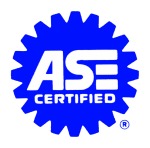Remember the days when transmission maintenance meant you periodically checked your transmission fluid level by pulling a metal dipstick from a tube alongside your engine? Well those days are rapidly coming to a close. Many new vehicles are doing away with the transmission dipstick and easily accessible tubes for adding fluid to your car’s transmission.
Here is the reason for the change: a vehicle owner can damage a transmission by overfilling or putting the wrong transmission fluid in the car.
Transmission fluid is not a generic item any more. Various manufacturers are installing fluids with specific formulas to match the precision internal components of modern transmissions. Use the wrong fluid and the transmission can fail long before the car’s new car warranty expires.
Manufacturers do not like replacing transmissions under warranty. It is expensive. Owners get upset. And proving the owner damaged the transmission by using the wrong fluid is both difficult to do and often is more expensive than replacing the transmission.
Sadly many of these owners had their transmission fluid changed by a quick change oil and fluid shop. Try getting the quickie lube shop to pay for the blown transmission. Good luck….
To protect themselves, manufacturers are making it difficult to service transmissions. They are extending recommended service intervals. And in some cases are offering pre-paid maintenance services in the price of a new car.
Transmission fluids still break down. They still get dirty. And they still need to be changed. Failure to maintain a transmission through routine service will shorten the transmission’s life. But from the manufacture’s point of view, a transmission that fails outside the warranty period is not their problem. And since most people who purchase new cars do not keep the vehicles much beyond five years or 100,000 miles, the original purchaser does not much care either.
So what should you do? Experienced mechanics change the transmission fluid on their own vehicles every 30,000 to 60,000 miles. Why? They want their vehicles to last. They understand the importance of transmission services. They have special tools and equipment needed to evacuate and replace fluids. And they know how to select the correct fluid for the vehicle.
If you own a newer car – particularly one you want to keep for 200,000 miles – or if you just purchased a used vehicle, visit a qualified independent repair shop that sells high end lubricants such as Amsoil. Let them check your fluids and follow their recommendations for transmission maintenance and service.









